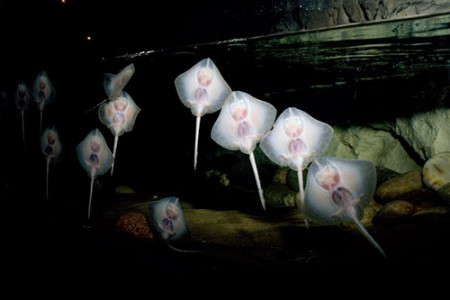
Ray Babies Thriving In New Nursery
30 July 2014
by Visit Blackpool
Britain’s first purpose-built nursery for baby rays has notched up 18 successful births.
The new unit at SEA LIFE Blackpool was launched last year as part of the wider Sea Life network’s pioneering breeding programme.
Blackpool, with its handy supply of fresh seawater straight from the Irish Sea, was thought the ideal base for the breeding of native ray species.
Eggs collected from main Pier Display last year have now produced three baby painted rays and no fewer than 15 thornback rays.
“It’s a fantastic tally so soon in the new nursery’s life,” said displays supervisor Scott Blacker.
“The eggs take four to six months to hatch out, but remarkably all 18 of our current batch of babies were born within a fortnight of each other,” he added.
The ultimate goal for the new nursery is for it to be able to supply mature rays to the rest of the European Sea Life estate.
And all eyes are on the newly laid eggs of one particular species – the undulate ray – now so scarce in UK waters that it is officially protected.
“There were already mature undulate rays at many SEA LIFE centres, including here at Blackpool, before the protective legislation came into being,” said Scott.
“Consequently we have launched a Europe-wide stud-book, to build up the healthiest possible captive population.
“Initially, this will enable us to continue displaying the species across our estate so we can educate visitors about the threats posed to this and other ray species from over-fishing.
“Longer term we will be able to provide expertise and perhaps even stock, should a reintroduction programme become necessary.”
Blackpool has already sent a pair of mature undulates to other Sea Life’s to help ensure a healthy gene pool, but has retained an elderly female and it’s six year-old daughter, and has welcomed another mature pair from Weymouth Sea Life Park.
Two eggs laid a few days ago are now safely deposited in the same nursery tank occupied the newly hatched baby thronbacks and painted rays, and should hatch around Christmas.